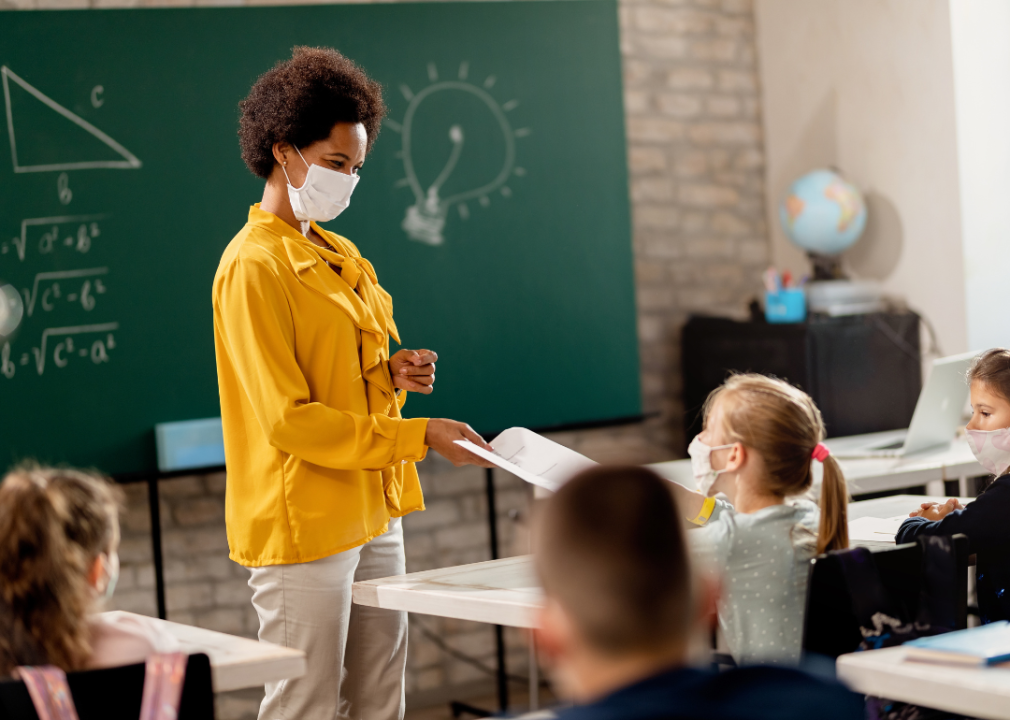10 challenges facing teachers during COVID-19
Published 7:00 pm Tuesday, June 28, 2022
Drazen Zigic // Shutterstock
10 challenges facing teachers during COVID-19
School districts across the U.S. could potentially see a mass exodus of teachers as educators continue to feel the added stress and heightened workloads since the start of the COVID-19 pandemic. With this in mind, Study.com cited news reports and identified 10 pandemic-related challenges facing teachers.
More than half of public school teachers and administrators intend to retire or leave the profession sooner than they originally planned prior to the pandemic, a January 2022 National Education Association poll found. Many teachers have expressed dissatisfaction in their profession largely due to burnout, feeling overworked due to understaffed schools, and salaries unable to keep up with inflation.
At the start of the pandemic, when many companies abruptly closed their offices (some for a few days, some for weeks) before instructing their employees to work from home, educators were forced to adjust practically overnight to teach in new modalities. Teachers were expected to be readily available while simultaneously teaching their own children, who were also stuck at home.
It started with navigating online learning and when schools finally did reopen, teachers were forced to quickly adjust to a classroom setting during COVID-19, deal with staff shortages, absences from existing staff and students, a barrage of questions and demands from parents, and the mask debate, among other factors.
To recruit and retain teachers, some states have recently approved bills to increase salaries amid a trend of resignations and retirements in schools nationwide. Even so, many teachers have resorted to taking on second jobs. A 2021 national survey of 1,200 classroom teachers conducted by the Teacher Salary Project revealed 82% of respondents were either currently or had previously taken on additional work to make ends meet. More than half said they were juggling several jobs, and 17% said they’d worked multiple jobs during the school year that had nothing to do with teaching.
Read on to learn about the pandemic-related obstacles teachers are dealing with today.
![]()
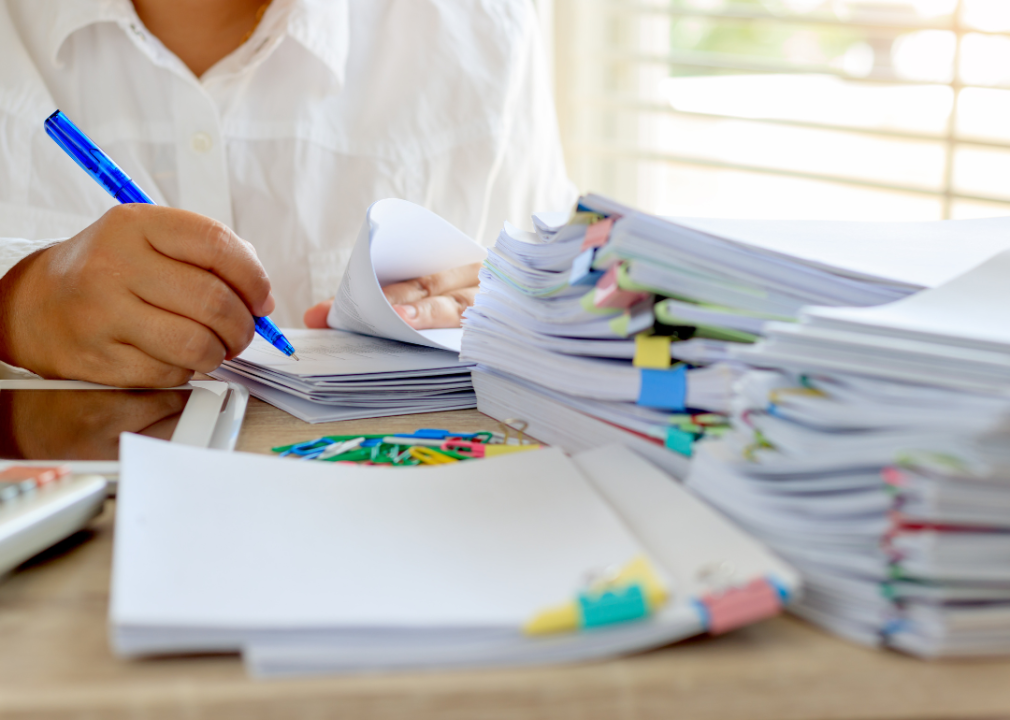
NuPenDekDee // Shutterstock
Burnout from increased demands
The nature of an educator’s work poses varied challenges, with many facets and responsibilities of the job going beyond what’s typically required of teachers. This can include not knowing what experience or situation a student may be coping with outside the classroom or even subconscious thoughts of the heightened incidents of school shootings. Add these concerns to the many responsibilities that teachers already have daily, such as planning lessons and knowing which projects to grade that day.
The National Education Association found that the biggest challenge for educators is burnout, with 90% reporting it as a very or somewhat serious issue. The additional workload teachers, administrators, and school staff have had to take on are key stressors behind the burnout many are experiencing in the profession.
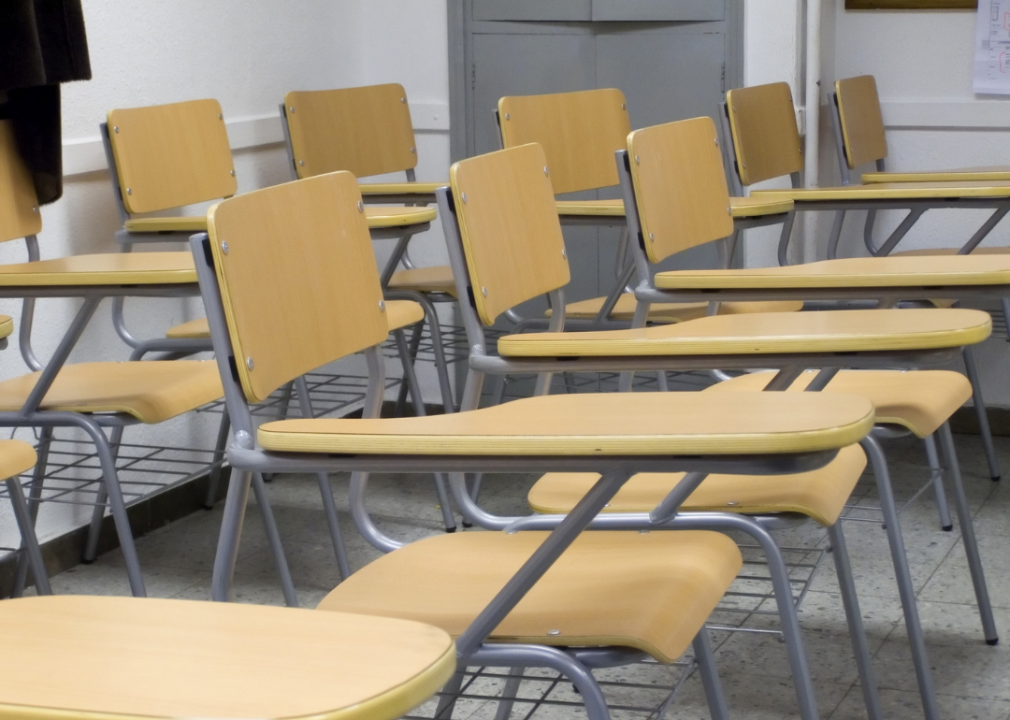
Alberto P // Shutterstock
Learning loss from student absenteeism
The pandemic disrupted how students learned, and absenteeism was a significant challenge that schools had to deal with. The Camden City School District in New Jersey, for example, saw a 57% increase in students who missed 10 or more school days. Absenteeism was significantly high among preschoolers, kindergarten-aged children, and high school freshmen.
There were a variety of reasons why students couldn’t log into their virtual classes—not having a quiet space at home to log on or having to help supervise their younger siblings among them. For younger students, staying engaged online the entire time was particularly challenging. During pre-pandemic times, Camden schools, a state-run system, once had a 92% average daily attendance rate.

FamVeld // Shutterstock
Bridging the digital divide
At the height of the pandemic, there were a slew of academic disruptions. While most schools are back to teaching fully in classrooms, there are a few remote learning options for students.
There is data, however, that suggests remote learning contributed to the fall in academic performance. A recent Curriculum Associates study found that students who were in remote learning did worse on summative state assessments than students who learned in person the previous school year. The study reviewed data of roughly 2 million students and compared students’ academic growth prior to the pandemic to students’ progress during the 2020-21 and start of the 2021-22 school years.
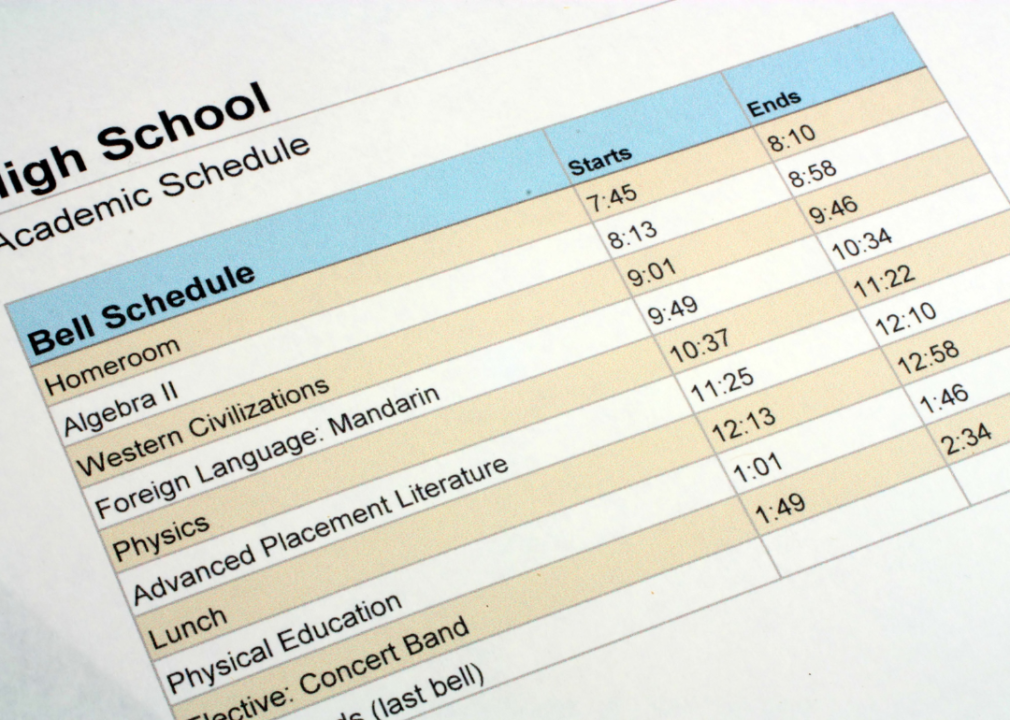
Ryan R Fox // Shutterstock
Reestablishing schedules for students
After over two years of disruptions, many people are ready to move on and get back to a somewhat normal space. Throughout the pandemic, there were early care programs that stayed open to provide care for parents with young children. As students prepare to start another school year, parents may be wary, but reports show about 2 in 3 parents are comfortable with in-person learning. Parents of children ages 5 to 8 also seem to be comfortable with the speed at which schools are reopening. With many schools across the country already being open a full school year since the pandemic, it appears many are on their way to reestablishing their schedules.

Drazen Zigic // Shutterstock
Overly demanding parents
Parents and teachers are still finding ways to handle the anxiety that persists from the ongoing pandemic. Since the start of the pandemic, in fact, teachers have received more aggressive emails from parents—mostly those who did not want their children wearing masks and who blamed the schools for learning loss. According to the American Psychological Association’s Violence Against Educators and School Personnel: Crisis During COVID report, middle school teachers received more threats than teachers who taught other grade levels, and administrators reported the most amount of threats compared to other staff.
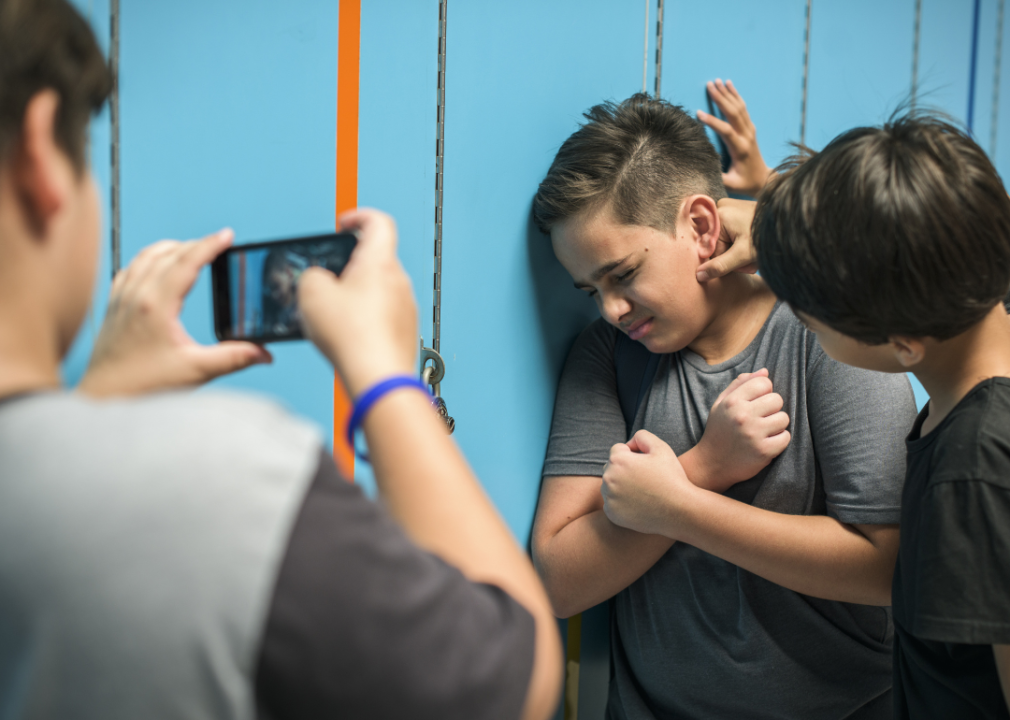
Rawpixel.com // Shutterstock
Surge in violent behavior
Many educators are facing increased student misbehavior. Not only do they have to monitor bullying among students, but several teachers and other members of the education profession also say they’ve received more violent threats from students than during the fall of 2019.
A survey from the American Psychological Association showed that 18% of school psychologists and social workers, in addition to 15% of school administrators, have disclosed experiencing a violent incident from a student. The APA reached out to nearly 15,000 pre-K–12 educators, school staff, administrators, and counselors from March 2020 to June 2021. The challenges aren’t only coming from the students; 29% of educators noted at least one incident of verbal and/or intimidating behavior from a parent.
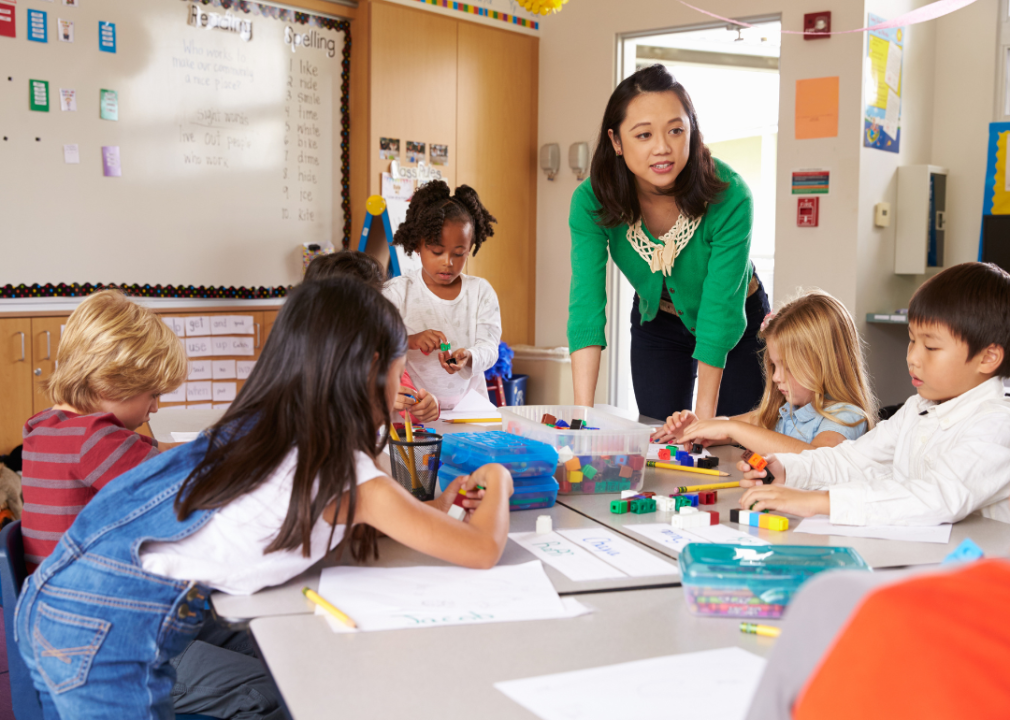
Canva
Taking on additional responsibilities due to vacancies
More than two years since the pandemic began, educators are still dealing with unprecedented staff shortages. In Nevada, for example, principals have had to teach in classrooms and take on janitorial roles, vacuuming school hallways and even cleaning toilets. In Vermont, teachers have also had to grab cleaning supplies to assist with the short staffing of custodial crew.
There’s also been vacancies on the teaching side. Special education reported one of the highest vacancy rates, with 45% of schools stating a need for this role. There’s also been a need for general elementary school teachers (31%) and substitute teachers (20%).
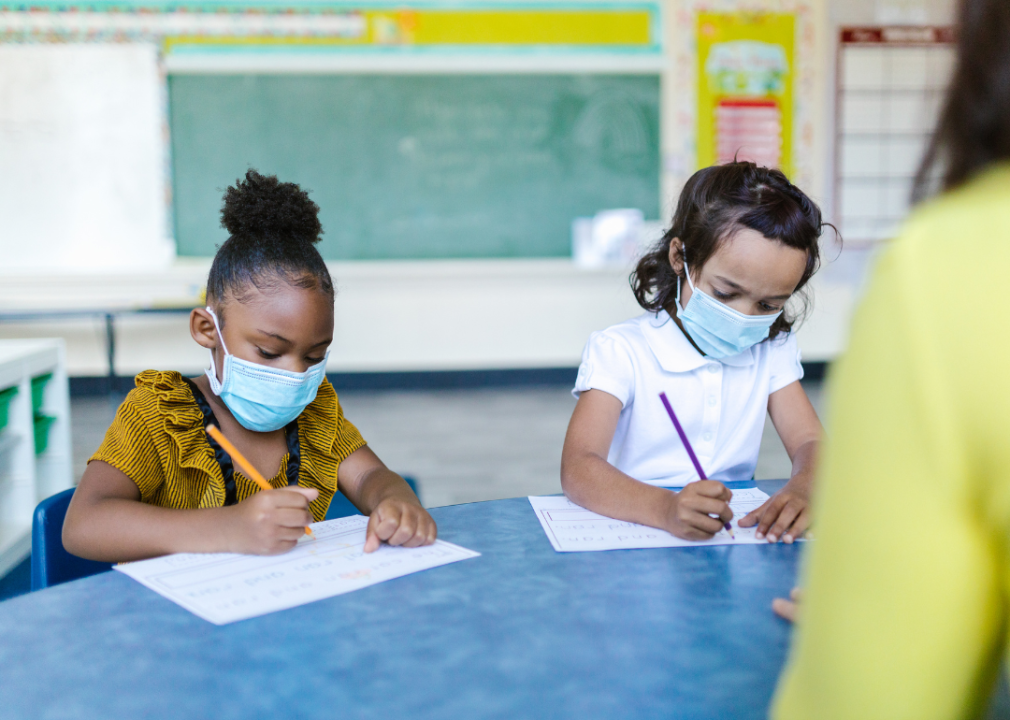
Canva
Following the latest public health guidelines
Safety has been a particularly concerning factor throughout the pandemic. For teachers, it’s been stressed to help keep students healthy. The quickly changing guidelines from the Centers for Disease Control and Prevention were sometimes conflicting, and educators had to keep up and be familiar with the most current mandates. For example, the New York City Department of Education issued a statement that, beginning June 13, 2022, “face coverings would be optional for students in early childhood schools or programs.” This wasn’t always the case.
This story originally appeared on Study.com and was produced and
distributed in partnership with Stacker Studio.


